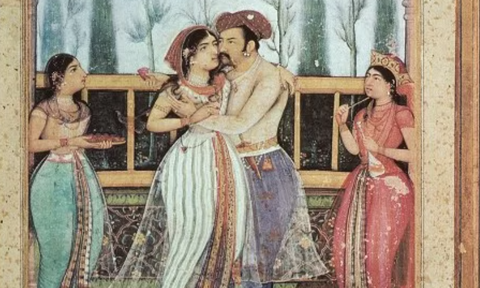
Whether you were a peasant in medieval times or a millennial stuck to the screen of your choice while viewing the livestream of Meghan Markle and Prince Harry’s wedding, royal nuptials have always held interest for us non-royals.
Aside from reminding us of the tales we’ve grown up with that had kings and queens marrying in grand wedding ceremonies, heralding their happy ever afters, royal weddings have been fascinating throughout history because of some unique traditions.
We decided to go down the rabbit hole of royal weddings to dig out some of the most interesting and bizarre wedding traditions from around the world.
Funding the Weddings of the Poor

According to historian Eugenia Vaninia, many Indian monarchs considered arranging weddings of the less fortunate a key part of their own wedding celebrations. Records of Indian royalty arranging weddings of servants and those who were extremely poor, including orphans, have been discovered. Most notably, Mughal empress Nur Jahan reportedly arranged the weddings of at least 500 orphan girls during her reign. This was apparently done by the royals to share the love with their subjects.
Bridal Pageant

Tsars of Russia had their own take on reality dating shows like the Bachelor way back in the 16th century. All the noblemen of the court were required to bring their eligible daughters to the palace to take part in a procession where the tsar would select his bride. Not only this, the tsar had the authority to use this bridal pageant to select brides for his brothers and other members of his family. Even if the bride has already been chosen by the tsar, the pageant was held to make the procedure seem fair and to avoid conflicts between aristocrats.
Laying the Bouquet on the Tomb

You might recall Meghan Markle and Kate Middleton placing their wedding bouquet on the Tomb of the Unknown Warrior in Westminster Abbey in London during their wedding ceremony. This tradition of the British royal family dates back to the current queen’s mother. Lady Elizabeth Bowes-Lyon laid her wedding bouquet on the iconic memorial during her wedding to George VI in 1923. She did this to pay respect to her beloved brother Fergus who had lost his life in the First World War in 1915 and whose last remains were lost in France during the war.
Mandatory Dress Code

The Qing dynasty in China, who ruled from the 17th century to 1912, took their wedding ceremonies and celebrations very seriously. A regular Qing royalty wedding would present the kingdom with 20 days of holidays where nobody could be punished for any crime. On the wedding day, everybody around the country was required by law to wear the traditionally auspicious colours red and green for the newly wedded couple’s happy future.
Sugar ‘Subtleties’

If you think extravagant wedding cakes are over-the-top, they’re nothing compared to the sweet treats medieval European royalty liked to include in their wedding ceremonies. Sugar was considered a status symbol back then, so naturally, the royals used it in obscene ways to display their wealth and power. Most royals began featuring items known as ‘subtleties’ made out of boiled sugar or marzipan in their wedding feasts. These sugary treats ranged from small figurines of mythical creatures like dragons and saints to life-size sculptures of elephants and whales. The most bizarre one was recorded in 1600, during the wedding of King Henry VI and Maria de Medici, where a life-size sugar sculpture of the king was used in his place as he wasn’t present for his own ceremony.






